For successful 3D printed motorcycle parts, you’ll need to select durable materials like carbon fiber infused nylon for strength-to-weight ratios. Optimize your CAD designs with proper 0.1-0.2mm tolerances and avoid unsupported overhangs. Master print settings by adjusting temperatures—carbon fiber PLA requires 220-260°C—and use heated beds at 60°C. Post-process with sanding and heat treatment for professional finishes. Always prototype with inexpensive materials first to test fit and functionality before creating final components that’ll transform your ride.
Choose the Right Materials for Durability and Performance
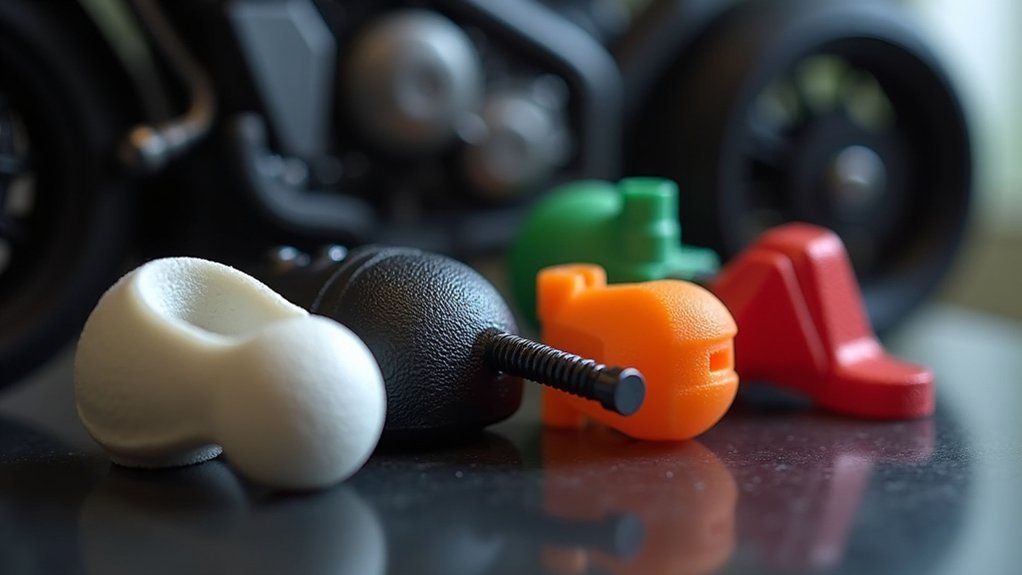
Selection of the right material forms the foundation of any successful 3D printed motorcycle part project.
When printing custom parts, you’ll need materials that deliver both durability and performance under demanding conditions. Carbon fiber infused nylon stands out for structural components, offering exceptional strength-to-weight ratios that handle stress and temperature variations effectively.
For non-critical applications, PLA works well due to its printing ease, though ABS provides better heat resistance for functional motorcycle parts.
Nylon excels in flexible applications like gear shift knobs, delivering impressive impact resistance and wear tolerance. Engineering resins become essential when you need high precision and thermal resistance for intricate accessories.
Always match your material choice to your printer’s capabilities, as specialized materials like carbon fiber require hardened nozzles for ideal results.
Optimize Your CAD Design for 3D Printing Success
Precision in CAD design determines whether your 3D printed motorcycle parts will function flawlessly or fail under real-world conditions.
The difference between CAD precision and guesswork is the difference between parts that perform and parts that break.
You’ll need proper tolerances of 0.1-0.2 mm to accommodate printing process limitations and guarantee perfect assembly fits. Incorporate fillets and chamfers into your design to reduce stress concentrations and strengthen custom motorcycle parts under load.
Refine the design for your specific 3D printing technology by avoiding unsupported overhangs and maximizing layer adhesion.
Consider part orientation carefully—it dramatically affects strength and surface finish while minimizing support requirements. Design and prototyping become more effective when you align load paths with print orientation.
The benefits of 3D printing shine when creating complex geometries, so leverage appropriate infill patterns like honeycomb for peak strength-to-weight ratios.
Master Print Settings for Professional Quality Results
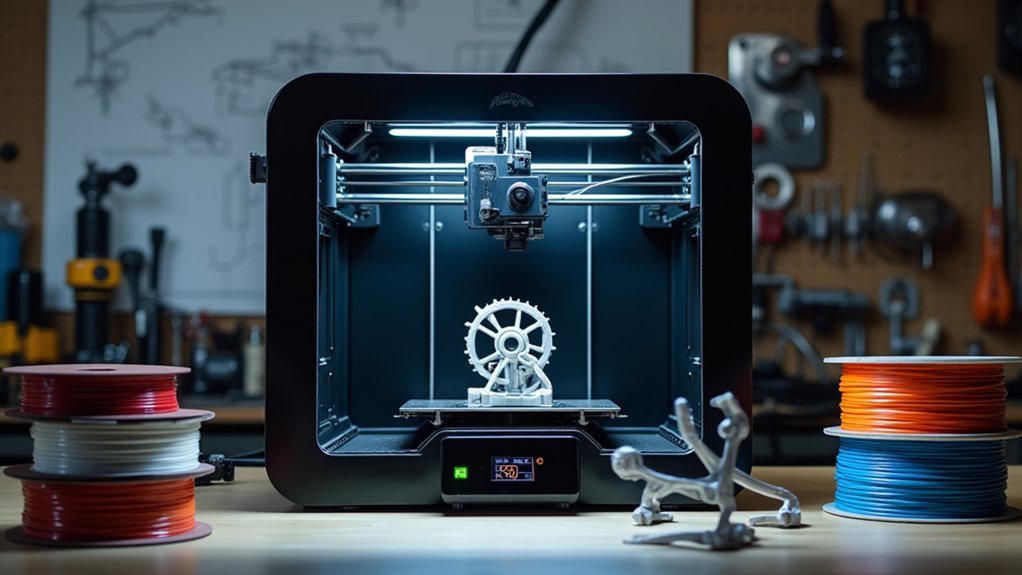
When you’re ready to transform your optimized CAD design into a physical motorcycle part, mastering your printer’s settings becomes the difference between amateur results and professional-grade components.
Your 3D printing manufacturing process requires precise calibration to produce printed parts worthy of your custom bike.
Adjust print speed and layer height based on complexity—intricate motorcycle designs demand slower speeds and 0.1mm layer heights for superior detail.
Set proper temperatures for your filament; Carbon Fiber infused PLA needs 220-260°C to prevent clogging.
Guarantee solid bed adhesion with heated beds at 60°C for PLA, reducing warping issues.
Fine-tune retraction settings between 4-6mm distance and 25-40mm/s speed to eliminate stringing.
Regular printer calibration maintains consistency throughout your design and print workflow.
Post-Processing Techniques for Perfect Fit and Finish
Perfect print settings create the foundation, but raw 3D printed motorcycle parts rarely achieve the professional appearance and precise tolerances your custom parts demand. Post-processing transforms rough prints into polished components.
Start with sanding to improve surface quality, progressing through grits from coarse to fine. For ABS parts, acetone vapor smoothing eliminates layer lines and creates aerodynamic surfaces. Apply primer before painting to guarantee proper adhesion and uniform finish.
| Technique | Purpose | Best For |
|---|---|---|
| Sanding | Surface quality improvement | All materials |
| Acetone vapor smoothing | Layer line removal | ABS parts only |
| CNC machining | Dimensional accuracy | Critical tolerances |
When printed parts have dimensional inaccuracies, CNC machining guarantees perfect fit. Heat treatment strengthens functional components subjected to stress.
Test and Validate Parts Before Final Installation
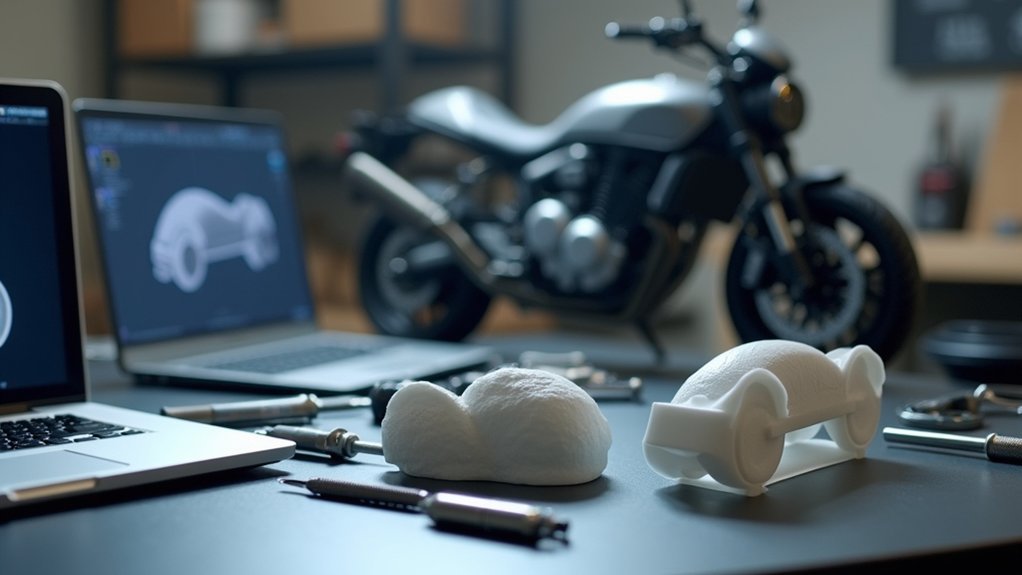
Before committing your carefully crafted motorcycle parts to their final destination, rigorous testing separates successful projects from costly failures. Start by printing prototypes using inexpensive materials to test fit and functionality before investing in premium materials. This approach saves both time and money during iterations.
Use CAD software to simulate stress testing and identify potential failure points before printing. Once you’ve printed test parts, validate their performance under actual motorcycle operating conditions, including temperature extremes and mechanical stress.
Create a feedback loop with fellow enthusiasts or experts who can provide valuable insights on part functionality. Document your testing process and results thoroughly—this reference will improve design accuracy and boost efficiency for future printing projects, ensuring reliable motorcycle performance.
Frequently Asked Questions
Can You Make Motorcycle Parts With a 3D Printer?
You can definitely make motorcycle parts with a 3D printer. You’ll get strong, durable components using materials like carbon fiber infused PLA and nylon, plus you’ll enjoy faster production and lower costs.
What Is the 45 Degree Rule for 3D Printing?
You’ll follow the 45-degree rule to avoid overhangs exceeding 45 degrees from vertical. This prevents sagging and print failures without support structures, ensuring better quality and reducing material waste in your prints.
What Is the Best Material to 3D Print RC Car Parts?
You’ll want ABS plastic for high-impact parts due to its durability, or nylon for gears and suspension components. PETG offers good balance, while carbon fiber-infused filaments provide superior strength-to-weight ratios.
What Is the Most Profitable Thing to 3D Print?
You’ll find custom motorcycle parts are extremely profitable to 3D print. Quick replacement components like brake pads and gear levers offer high margins, while carbon fiber-infused accessories command premium prices from enthusiasts.

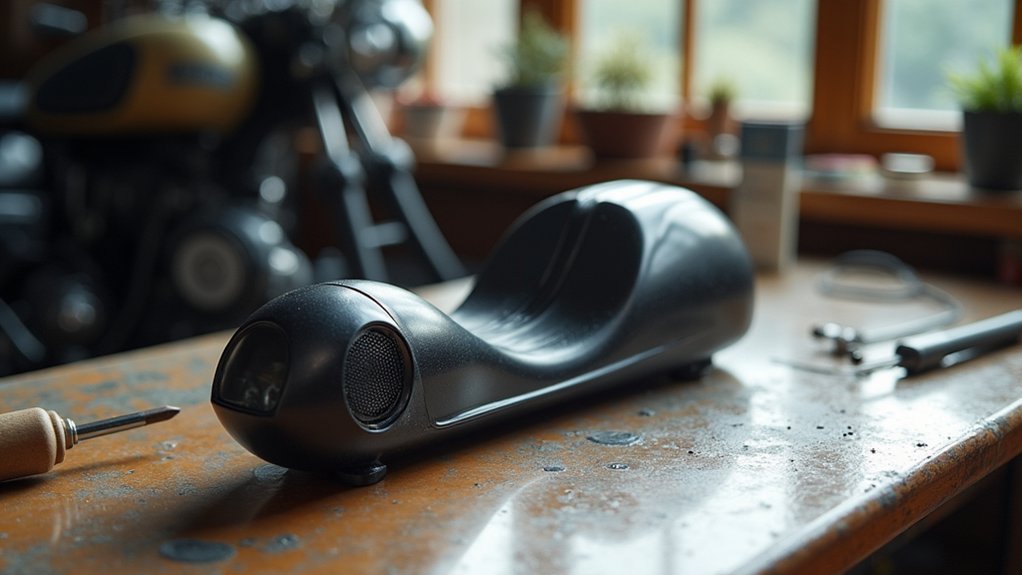
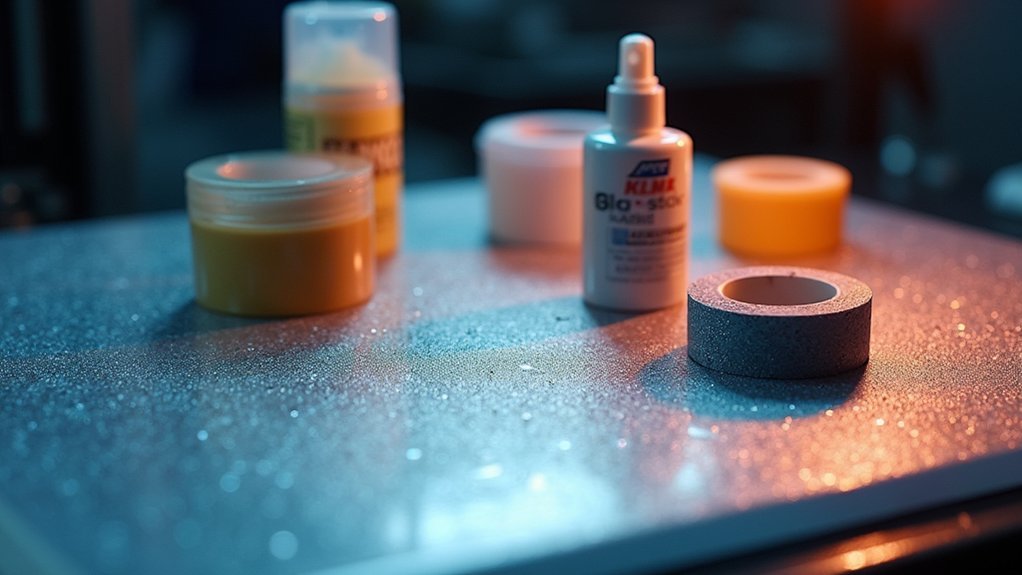
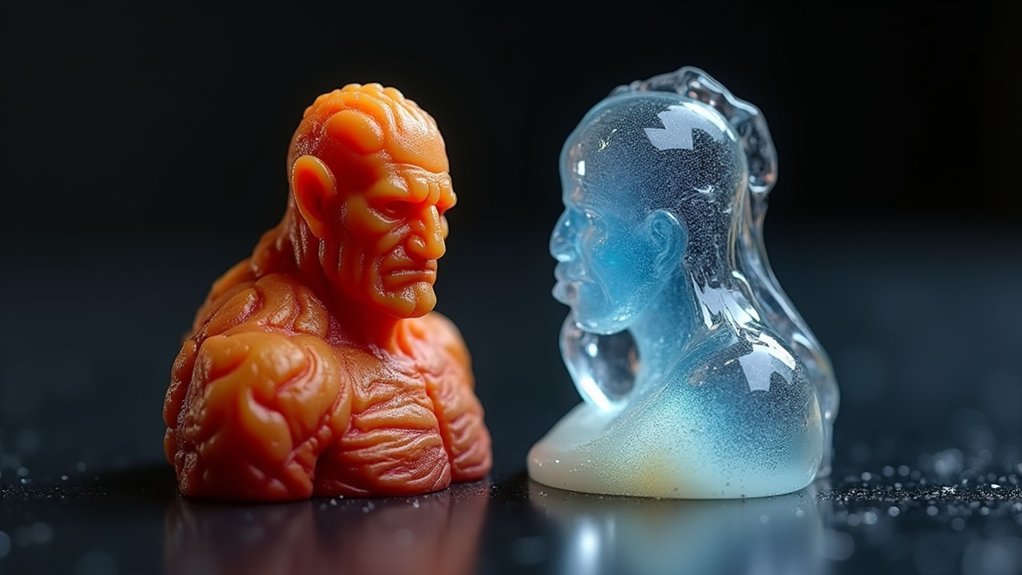
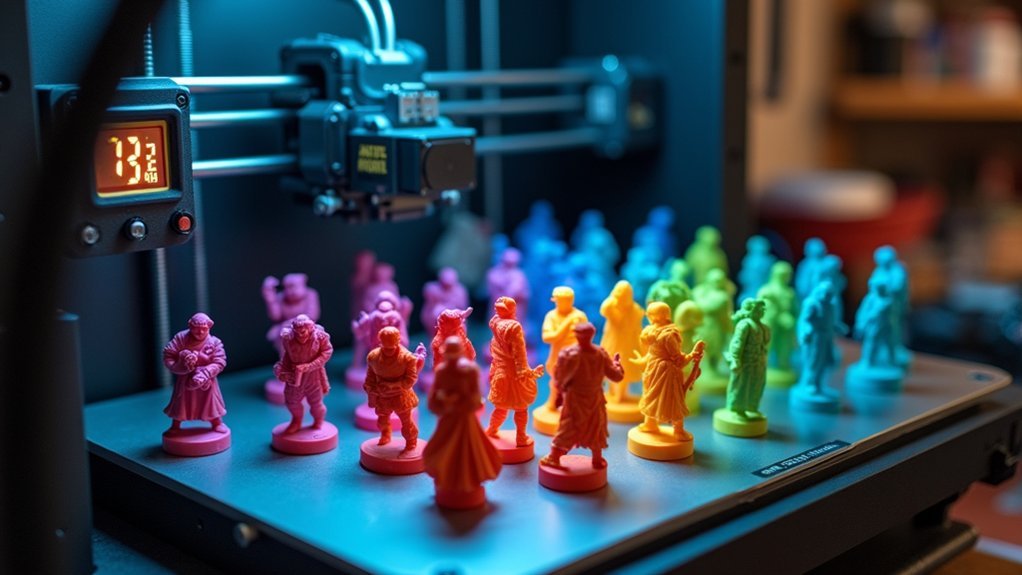
Leave a Reply